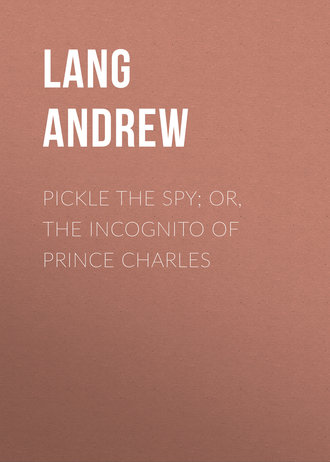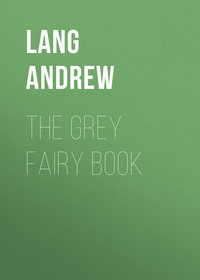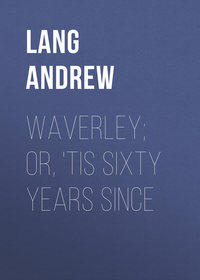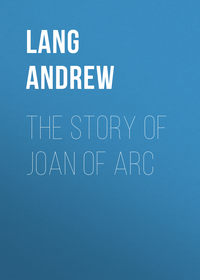 полная версия
полная версияPickle the Spy; Or, the Incognito of Prince Charles
‘If His Majesty’s Enemys should once more faile in their favourite scheme of Envasion, this young gentilman [Glengarry] intends to make offer of raising a Regiment of as good men as ever was levied in North Britain, if he gets the Rank of full Colonell, the nomenation of his Officers, and suitable levie Mony. He can be of infinite service in either capacity mentioned in this letter [spy or Colonel], that his Majesty is graciously pleasd to employ him. He begs that this may not be delay’d to be laid before the King, as things may soon turn out very serious. He makes a point with your Grace that this be communicated to no mortall but his Majesty, and he is willing to forfite all pretensions to the Royall favour, if his services at this criticall juncture does not meritt his Majesty’s aprobation. If your Grace calls upon him at this time, as he was out of pocket upon further Chants, it will be necessary to remit him a bill payable at sight for whatever little sum is judg’d proper for the present, untill he gives proof of his attachment to the best of Sovereigns, and of his reale zeale for the service of his King and Country, against a most treacherous and perfidious Enemy. I have now done my duty, my Lord, reffering the whole manadgement to your Grace, and I beg youl pardon the freedom I have taken as I have the honour to remain at all times
‘My Lord, your Grace’s Most obedient and most oblidged humble Servt.
‘Pickle.‘February 19, 1760.
‘Mack [make] mention of Pickle. His Majesty will remember Mr. Pelham did, upon former affairs of great consequence.
‘Direction – To Alexander Mackdonell of Glengary by Foraugustus [Fort Augustus].’
Pickle, as he remarks in one of his artless letters, ‘is not of a suspicious temper, but judges of others’ candour by his own.’ He now carries this honourable freedom so far as to give his own noble name and address. Habemus confitentem reum. Persons more suspicious and less candid will believe that Pickle, in November 1759, was standing to win on both colours. His readiness to sell a regiment of Macdonnells to fight for King George is very worthy of a Highland chief of Pickle’s kind.
On December 23, 1761, Alastair Macdonnell of Glengarry died, and Pickle died with him. He had practically ceased to be useful; the world was anticipating Burns’s advice:
‘Adore the rising sun,And leave a man undone To his fate!’We have unmasked a character of a kind never popular. Yet, in the government of the world, Pickle served England well. But for him there might have been another highland rising, and more fire and bloodshed. But for him the Royal Family might have perished in a nocturnal brawl. Only one man, Archibald Cameron, died through Pickle’s treasons. The Prince with whom he drank, and whom he betrayed, had become hopeless and worthless. The world knows little of its greatest benefactors, and Pickle did good by stealth. Now his shade may or may not ‘blush to find it fame,’ and to be placed above Murray of Broughton, beside Menteith and Assynt, legendary Ganelons of Scotland.
CHAPTER XIV
CONCLUSION
Conclusion – Charles in 1762 – Flight of Miss Walkinshaw – Charles quarrels with France – Remonstrance from Murray – Death of King James – Charles returns to Rome – His charm – His disappointments – Lochgarry enters the Portuguese service – Charles declines to recognise Miss Walkinshaw – Report of his secret marriage to Miss Walkinshaw – Denied by the lady – Charles breaks with Lumisden – Bishop Forbes – Charles’s marriage – The Duchess of Albany – ‘All ends in song’ – The Princesse de Talmond – The end.
With the death of Pickle, the shabby romance of the last Jacobite struggle finds its natural close.
Of Charles we need say little more. Macallester represents him as hanging about the coasts of England in 1761–1762, looking out for favourable landing-places, or sending his valet, Stuart, to scour Paris in search of Miss Walkinshaw. That luckless lady fled from Charles at Bouillon to Paris in July 1760, with her daughter, and found refuge in a convent. As Lord Elcho reports her conversation, Charles was wont to beat her cruelly. For general circulation she averred that she and James merely wished her daughter to be properly educated. 222
Charles, in fact, picked a new quarrel with France on the score of his daughter. Louis refused to make Miss Walkinshaw (now styled Countess of Albertroff) resign her child to Charles’s keeping. He was very fond of children, and Macallester, who hated him, declares that, when hiding in the Highlands, he would amuse himself by playing with the baby of a shepherd’s wife. None the less, his habits made him no proper guardian of his own little girl. 223 In 1762, young Oliphant of Gask, who visited the Prince at Bouillon, reports that he will have nothing to do with France till his daughter is restored to him. He held moodily aloof, and then the Peace came. Lumisden complains that ‘Burton’ (the Prince) is ‘intractable.’ He sulked at Bouillon, where he hunted in the forests. Here is a sad and tender admonition from Murray, whose remonstrances were more softly conveyed than those of Goring:
‘Thursday.‘When I have the honour of being with you I am miserable, upon seeing you take so little care of a health which is so precious to every honest man, but more so to me in particular, because I know you, and therefore can’t help loving, honouring, and esteeming you; but alass! what service can my zeal and attachment be to my dear master, unless he lays down a plan and system, and follows it, such as his subjects and all mankind will, and must approve of.’
Young Gask repeats the same melancholy tale. Charles was hopeless. For some inscrutable reason he was true to Stafford (who had aided his secret flight from Rome in 1744) and to Sheridan, supporting them at Avignon.
‘Old Mr. Misfortunate’ (King James) died at Rome it 1766; he never saw his ‘dearest Carluccio’ after the Prince stole out of the city, full of hope, in 1744 —
‘A fairy Prince with happy eyesAnd lighter-footed than the fox.’James expired ‘without the least convulsion or agony,’ says Lumisden, ‘but with his usual mild serenity in his countenance… He seemed rather to be asleep than dead.’ A proscribed exile from his cradle, James was true to faith and honour. What other defeated and fugitive adventurer ever sent money to the hostile general for the peasants who had suffered from the necessities of war?
On January 23, 1766, Lumisden met Charles on his way to Rome. ‘His legs and feet were considerably swelled by the fatigue of the journey. In other respects he enjoys perfect health, and charms every one who approaches him.’ The Prince was ‘miraculously’ preserved when his coach was overturned on a precipice near Bologna. Some jewels and family relics had not been returned by Cluny, and there were difficulties about sending a messenger for them: these occupy much of Lumisden’s correspondence.
Charles met only with ‘mortifications’ at Rome. The Pope dared not treat him on a Royal footing. In April 1766, our old friend, Lochgarry, took service with Portugal. Charles sent congratulations, ‘and doubts not your son will be ready to draw the sword in his just Cause.’ The sword remained undrawn. Charles had now but an income of 47,000 livres; he amused himself as he might with shooting, and playing the French horn! He never forgave Miss Walkinshaw, whom his brother, the Cardinal, maintained, poorly enough. Lumisden writes to the lady (July 14, 1766): ‘No one knows the King’s temper better than you do. He has never, so far as I can discover, mentioned your name. Nor do I believe that he either knows where you are, nor how you are maintained. His passion must still greatly cool before any application can be made to him in your behalf.’
A report was circulated that Charles was secretly married to Miss Walkinshaw. On February 16, 1767, Lumisden wrote to Waters on ‘the dismal consequences of such a rumour,’ and, by the Duke of York’s desire, bade Waters obtain a denial from the lady. On March 11 the Duke received Miss Walkinshaw’s formal affidavit that no marriage existed. ‘It has entirely relieved him from the uneasiness the villainous report naturally gave him.’ On January 5, 1768, Lumisden had to tell Miss Walkinshaw that ‘His Royal Highness insists you shall always remain in a monastery.’ Lumisden was always courteous to Miss Walkinshaw. Of her daughter he writes: ‘May she ever possess in the highest degree, those elegant charms of body and mind, which you so justly and assiduously cultivate… Did the King know that I had wrote to you, he would never pardon me.’
On December 20, 1768, Charles had broken with Lumisden and the rest of his suite. ‘Our behaviour towards him was that of faithful subjects and servants, jealous at all times to preserve his honour and reputation.’ They had, in brief, declined to accompany Charles in his carriage when his condition demanded seclusion. Lumisden writes (December 8, 1767), ‘His Royal Highness’ (the Duke of York) ‘thanked us for our behaviour in the strongest terms.’
We need follow no further the story of a consummated degradation. Charles threw off one by one, on grounds of baseless suspicion, Lord George Murray, Kelly (to please Lord Marischal), Goring, and now drove from him his most attached servants. He never suspected Glengarry. But neither time, nor despair, nor Charles’s own fallen self could kill the loyalty of Scotland. Bishop Forbes, far away, heard of his crowning folly, and – blamed Lumisden and his companion, Hay of Restalrig! When Charles, on Good Friday, 1772, married Louise of Stolberg, the remnant of the faithful in Scotland drank to ‘the fairest Fair,’ and to an heir of the Crown.
‘L’Écosse ne peut pas te juger: elle t’ aime!’
Into the story of an heir, born at Sienna, and entrusted to Captain Allen, R.N., to be brought up in England, we need not enter. In Lord Braye’s manuscripts (published by the Historical MSS. Commission) is Charles’s solemn statement that, except Miss Walkinshaw’s daughter, he had no child. The time has not come to tell the whole strange tale of ‘John Stolberg Sobieski Stuart and Charles Edward Stuart,’ if, indeed, that tale can ever be told. 224 Nor does space permit an investigation of Charles’s married life, of his wife’s elopement with Alfieri, and of the last comparatively peaceful years in the society of a daughter who soon followed him to the tomb. The stories about that daughter’s marriage to a Swedish Baron Roehenstart, and about their son, merit no attention. In the French Foreign Office archives is a wild plan for marrying the lady, Charlotte Stuart, to a Stuart – any Stuart, and raising their unborn son’s standard in the American colonies! That an offer was made from America to Charles himself, in 1778, was stated by Scott to Washington Irving on the authority of a document in the Stuart Papers at Windsor. That paper could not be found for Lord Stanhope, nor have I succeeded in finding it. The latest Scottish honour done to the King was Burns’s ‘Birthday Ode’ of 1787, and his song for ‘The Bonny Lass o’ Albany.’
‘This lovely maid’s of royal blood, That rulèd Albion’s kingdoms three,But oh, alas for her bonnie face! They hae wrang’d the lass of Albanie!’Tout finit par des chansons!
Of the Stuart cause we may say, as Callimachus says of his dead friend Heraclitus:
‘Still are thy pleasant voices, thy nightingales awake,For death takes everything away, but these he cannot take.’A hundred musical notes keep green the memory of the last Prince of Romance, the beloved, the beautiful, the brave Prince Charlie —everso missus succurrere saeclo. The overturned age was not to be rescued by charms and virtues which the age itself was to ruin and destroy. Loyal memories are faithful, not to what the Prince became under stress of exile, and treachery, and hope deferred, and death in life, de vivre et de pas vivre– but to what he once was, Tearlach Righ nan Gael.
Of one character in this woful tale a word may be said. The Princesse de Talmond was visited by Horace Walpole in 1765. He found her in ‘charitable apartments in the Luxembourg,’ and he tripped over cats and stools (and other things) in the twilight of a bedroom hung with pictures of Saints and Sobieskis. At last, and very late, the hour of her conversion had been granted, by St. François Xavier, to the prayers of her husband. We think of the Baroness Bernstein in her latest days as we read of the end of the Princesse. She had governed Charles ‘with fury and folly.’ Of all the women who had served him – Flora Macdonald, Madame de Vassé, Mademoiselle Luci, Miss Walkinshaw – did he remember none when he wrote that he understood men, but despaired of understanding women, ‘they being so much more wicked and impenetrable’? 225
1
Edition of 1832, i. p. x.
2
History of England from the Peace of Utrecht to the Peace of Aix-la-Chapelle. London, 1838, iii. 279.
3
An authentic account of the conduct of the Young Chevalier, p. 7. Third edition, 1749.
4
London, 1879.
5
Letters from Italy by an Englishwoman, ii. 198. London 1776. Cited by Lord Stanhope, iii. 556. Horace Mann to the Duke of Newcastle. State Papers. Tuscany. Jan. ½½, 174¾. In Ewald, i. 87. Both authorities speak of blue eyes.
6
A false Charles appeared in Selkirkshire in 1745. See Mr. Craig Brown’s History of Ettrick Forest. The French, in 1759, meant to send a false Charles to Ireland with Thurot. Another appeared at Civita Vecchia about 1752. The tradition of Roderick Mackenzie, who died under English bullets, crying ‘You have slain your Prince,’ is familiar. We shall meet other pseudo-Charles’s.
7
Ewald, i. 41.
8
Documentos Ineditos. Madrid. 1889. Vol. xciii. 18.
9
Voyages de Montesquieu. Bordeaux, 1894. p. 250.
10
Letters of De Brosses, as translated by Lord Stanhope, iii. 72.
11
See authorities in Ewald, i. 48–50.
12
Ewald, ii. 30. Scott’s Journal, i. 114.
13
Dennistoun’s Life of Strange, i. 63, and an Abbotsford manuscript.
14
Stuart Papers, in the Queen’s Library. Also the Lockhart Papers mention the wounding of the horse.
15
Life and Correspondence of David Hume. Hill Burton, ii. 464–466.
16
Jacobite Memoirs. Lord Elcho’s MS. Journal. Ewald, i. 77.
17
State Papers Domestic. 1745. No. 79.
18
Genuine Memoirs of John Murray of Broughton. La Spedizione di Carlo Stuart.
19
Treasury Papers. 1745. No. 214. First published by Mr. Ewald, i. 215.
20
Jacobite Memoirs, p. 32.
21
Chambers Rebellion of 1745, i. 71. The authority is ‘Tradition.’
22
I have read parts of Forbes’s manuscript in the Advocates’ Library, but difficulties were made when I wished to study it for this book.
23
D’Argenson’s Mémoires.
24
This gentleman died at Carlisle in 1745, according to Bishop Forbes. Jacobite Memoirs, p. 4.
25
Stuart MSS. in Windsor Castle.
26
Stuart Papers. Browne’s History of the Highland Clans, iii. 481.
27
James to Lismore. June 23, 1749. Stuart MSS.
28
Stanhope. Vol. iii. Appendix, p. xl.
29
Jacobite Memoirs.
30
The Kelly of Atterbury’s Conspiracy, long a prisoner in the Tower. It is fair to add that Bulkeley, Montesquieu’s friend, defended Kelly.
31
Stuart Papers. Browne, iii. 433. September 13, 1745.
32
Macallester’s book is entitled A Series of Letters, &c. London, 1767.
33
Wogan to Edgar. Stuart Papers, 1750.
34
D’Argenson, iv. 316–320.
35
Stair Papers.
36
Letters in the State Paper Office. S. P. Tuscany. Walton sends to England copies of the letters of James’s adherents in Paris; Horace Mann sends the letters of Townley, whom James so disliked.
37
D’Argenson’s Mémoires, v. 98, fol.
38
Ibid. v. 183.
39
Published by the Duc de Broglie, in Revue d’Histoire Diplomatique. No. 4. Paris, 1891.
40
Browne, iv. 36–38.
41
Genuine Copies of Letters, &c. London, 1748.
42
An Account of the Prince’s Arrival in France, p. 66. London, 1754.
43
There are letters of Bulkeley’s to Montesquieu as early as 1728. Voyages de Montesquieu, p. xx. note 3.
44
In his work on Madame de Pompadour (p. 109), M. Capefigue avers that he discovered, in the archives of the French Police, traces of an English plot to assassinate Prince Charles; the Jacobites believed in such attempts, not without reason, as we shall prove.
45
Walton. S. P. Tuscany. No. 55.
46
Mémoires, iv. 322.
47
See Le Secret du Roi, by the Duc de Broglie.
48
Tales of the Century, p. 25.
49
Pol. Corresp. of Frederick the Great, v. 114. No. 2,251.
50
Ibid. vi. 125. No. 3,086.
51
D’Argenson, v. 417. March 19, 1749. D’Argenson knew more than the police.
52
Stuart Papers. Browne, iv. p. 51.
53
Mémoires, v. 417.
54
Tales of the Century, ii. 48, ‘from information of Sir Ralph Hamilton.’
55
‘Information by Baron de Rondeau and Sir Ralph Hamilton.’
56
S. P. France. No. 442.
57
S. P. Tuscany. No. 58. Stuart Papers. Browne, iv. 52.
58
S. P. France. No. 442.
59
This may have been true.
60
S. P. Tuscany. No. 55.
61
Dr. King made a Latin speech on this occasion, rich in Jacobite innuendoes. Redeat was often repeated.
62
S. P. Poland. No. 75.
63
S. P. Russia. No. 59.
64
Pol. Corr., vi. 572, vii. 23.
65
Browne. Stuart Papers, iii. 502.
66
S. P. Tuscany. No. 54.
67
Hanbury Williams. From Dresden, July 2, 1749.
68
James had previously wished Charles to marry a Princess of Modena.
69
Mann, June 19, 1750.
70
Stuart Papers. Browne, ii. 73.
71
Correspondence of the Duke of Bedford, ii. 69. Bedford to Albemarle. Also op. cit. ii. 15. March 13, 1749. Bedford to Colonel Yorke.
72
Browne, iv. 57, 63.
73
In the Gask Papers it is said that 5,000l. was sent by Cluny to Major Kennedy. Kennedy himself buried the money.
74
All these facts are taken from the Stuart Papers, in manuscript at Windsor Castle.
75
Le 3. A. 1749. Projet pour mon arrive a Paris, et Le Conduit de Mr. Benn. Mr. Benn doit s’en aller droit à Dijon et son Compagnion Mr. Smith a Paris; Il faudra pour Mr. Smith une Chese [chaise] qu’il acheterra a Lunéville, ensuite il prendra Le Domestique du C. P. à Ligny, mais en partent d’icy il faudra que le Sieur Smith mont a Chevall et La Chese pourra y aller come pour son Retour a Paris. La personne dedans parraitrait profiter de cette occasion. Le Sieur Bonn doit rester quelqe jours come desiran acheter une Cofre et remettra La Sienne come par amitié au Sr. Smith, tout cecy paroissant d’hazard. Ensuite Le Sr. Smith continuera au Plustot son Chemin, et son Ami ira Le Sien en attendant, un peu de jours et à son arrivé a Dij. il doit Ecrive a Personne qu’il soite excepte La Lettre au – W. Le Ch. Gre. qu’il doit voire (et a qui il peut dire davoire ete a Di – Charge par Le P., sans meme Nomer son Camerade mais come tout seule) ne sachant rien davantage, et le laissant dans l’obscuriné, comme s’il Etoit dans le meme Cas, attendant des Nouvelles Ordres, sans rien outre savoire ou pouvoire penetre Etant deja Longtems sans me voire.’ Holograph of P. Charles.
76
Under the late Empire (1863) the convent was the hotel of the Minister of War. Hither, about 1748, came Madame du Deffand, later the superannuated adorer of the hard-hearted Horace Walpole, and here was her famous salon moire jaune, aux næuds couleur de feu. Here she entertained the President Hénault, Bulkeley, Montesquieu (whose own house was in the same street), Lord Bath, and all the philosophes, giving regular suppers on Mondays. In the same conventual chambers resided, in 1749, Madame de Talmond, Madame de Vassé, and her friend Mademoiselle Ferrand, whose address Charles wrote, as we saw, in his note-book (March 1749).
77
Grimm, ii. p. 183.
78
S. P. France. June 4, 1749. Ewald, ii. 200.
79
Translated from the French original at Windsor Castle.
80
Histoire de Montesquieu, par L. Vian, p. 196.
81
Correspondance de Madame du Deffand. Edition of M. de Lescure, ii. 737–742.
82
D’Argenson confirms or exaggerates this information.
83
Browne, v. 66. Letter of Young Glengarry, January 16, 1750.
84
Browne, iv. 68. I have not found the original in the Stuart Papers at Windsor.
85
The Mr. Dormer who was Charles’s agent is described in Burke as ‘James, of Antwerp,’ sixth son, by his second marriage, of Charles, fifth Lord Dormer.
86
State Papers. Examination of Æneas Macdonald.
87
July 1, 1754. Browne, iv. 122.
88
Mr. Ewald’s dates, as to the Prince’s English jaunt, are wrong. He has adopted those concerning the lady’s movements, ii. 201.
89
Charles himself (S. P. Tuscany, December 16, 1783) told these facts. But Hume is responsible for the visit to Lady Primrose, dating it in 1753; wrongly, I think.
90
Private Memorandum concerning the Pretender’s eldest son. Brit. Mus. Additional MSS.
91
A medal of 1750 bears a profile of Charles, as does one of September 1752.
92
This may be of 1752–1753, and the ‘Channoine’ may be Miss Walkinshaw, who was a canoness of a noble order.











